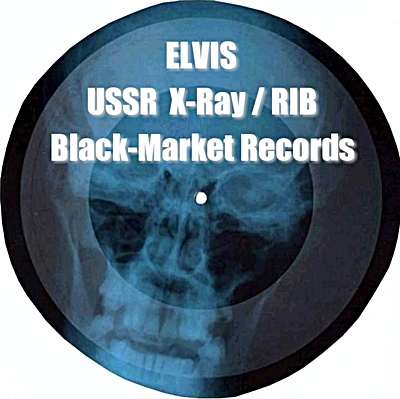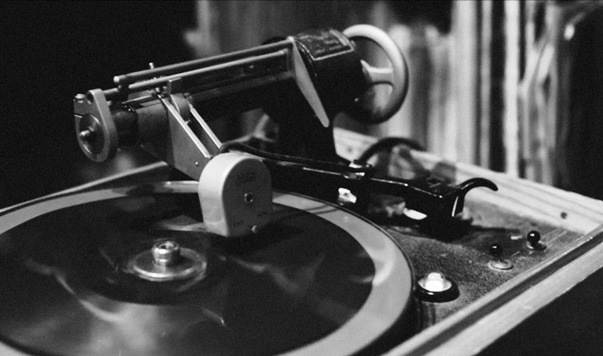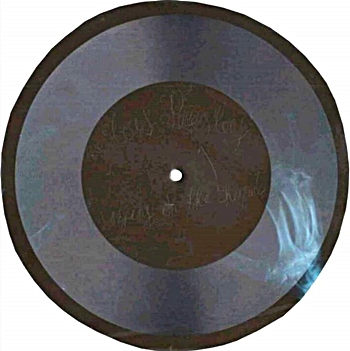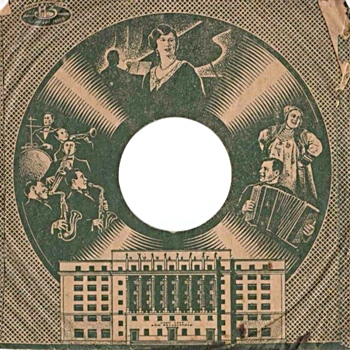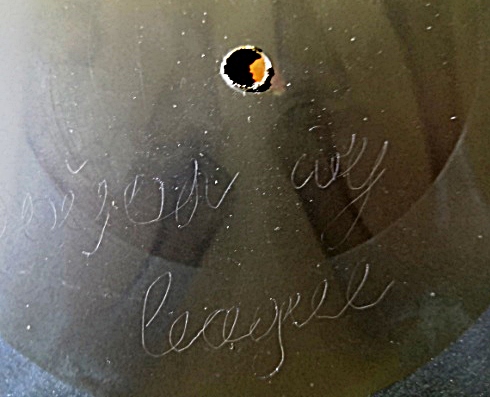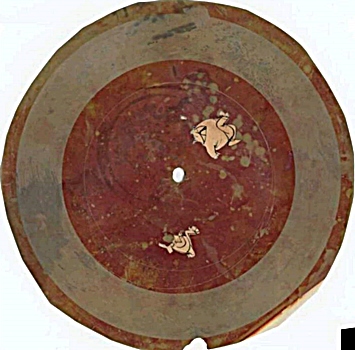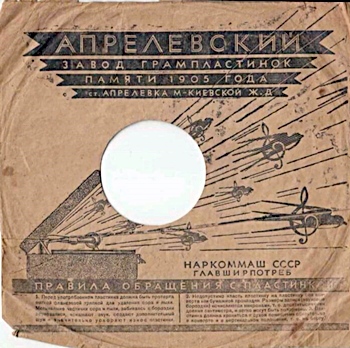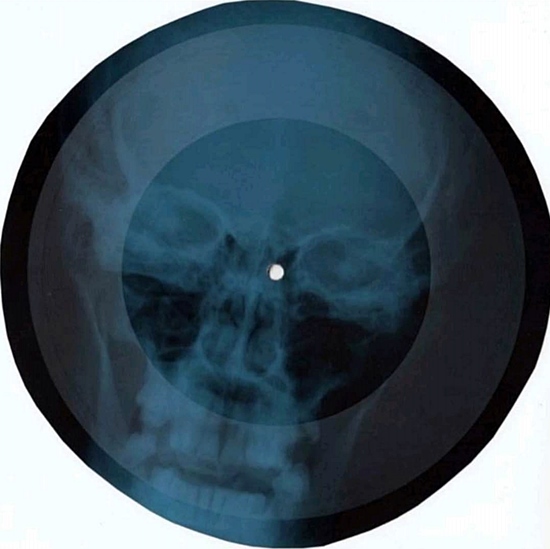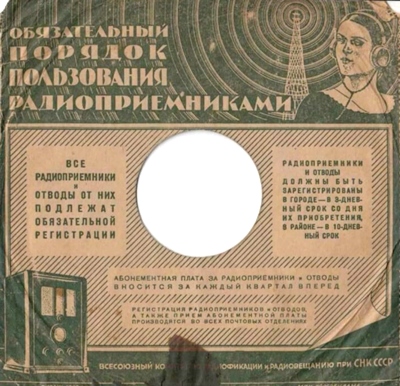 |
 |

EIN Spotlight Black market Elvis recordings in the U.S.S.R. (RIBS/Bones/x-ray records/roentgenizat) EIN Introduction: One of the most unusual and least known genre of illegal Elvis records are those clandestinely produced in Russia and its associated eastern European countries from the 1950s to early 1970s. As western popular music was banned in the USSR (home production of western recordings were officially banned in 1958), the only way to hear new American and British songs was Variously known as music on ribs, bones music, and x-ray records, they flourished in a black market. The Russian term for bones music is “roentgenizat”. Each record was individually pressed on discarded x-ray films sourced from friendly staff and/or waste bins at Russian hospitals. Many Elvis singles were pressed on x-ray film.
Each single sided x-ray record was cut in real time using adapted phonograph players or machines for making music postcards. A lit cigarette was used to burn the hole in the centre of the record (x-ray). While sourcing a copy of the original record was expensive and had to be smuggled into Russia, at the time, buying an x-ray record was cheap. The downside of bones music was that the audio quality was generally poor and the records, being x-ray film, were fragile, and would only last 5 to 10 plays. The increasing availability of tape recorders led to the end of bones music in the early 1970s.
Today, if you can find an Elvis x-ray record they will set you back between US$50 and US$200. Bone records are occasionally listed on ebay. The records represent a novel element for any collector's Elvis collection. Further reading/References: https://en.wikipedia.org/wiki/Ribs_(recordings) https://www.dazeddigital.com/music/article/32308/1/russia-x-ray-vinyl-music-soviet-union https://obsoletemedia.org/ribs-recordings/
You can just make out "Crying In The Chapel" marked on this x-ray record.
EIN contributor, Ruben Beekmans, has a number of Elvis RIBS records in his collection and wrote this article for EIN: Elvis Presley, the real (highly illegal) bootlegs - Bone records, Ribs or audio on X-Ray by Ruben Beekmans, The Netherlands If you are born in the west there is a big possibility that you have never heard of these records. So exactly what is/are bone records, Ribs, or audio on X-Ray? During the Cold War era in the Soviet Union, it was forbidden by Joseph Stalin to have items from the West or listen to Western radio and songs that were forbidden by the Soviet Party. Only Georgian songs or Russian folk music was allowed. Of course, in repressed times, people will find a way to get what they want and especially when something is forbidden. This is where it becomes really interesting. The Soviet people found a way to make bootlegs of Western songs and music. First of all they had to find a wealthy person they could really trust and had contacts in the West, who could buy a Western record. The price for one single was the equivalent of one month of average salary! When they obtained a hard copy of a single they first would go to a hospital and ask for X-rays. Sometimes they gave blood in exchange. The hospital could give the X-rays because at the end of every year, all the X-rays had to be destroyed because they were very flammable (like celluloid films).
"Poison Ivy League" carved into the X-ray plate
Once they had the X-rays, they had to copy the Western singles one at the time. They had a recorder which pressed the grooves on 78 rpm into the X-ray. The X-ray was just the right material for it. You see it in flexi-discs today. Using a cigarette they burned a hole in the middle so it fitted on the turntable. The name of the artist and title were usually carved into the record.
The person who recorded it, didn’t distribute or smuggle the bone records. To spread the risk of getting caught, they had someone else sell them on the streets and hangouts. A seller could easily carry 50 records because they were flexible. Once someone had bought a bone record they could listen to the music on their record player. Often the records would be exchanged among friends for a bottle of vodka. If you got caught with a bone record or recording device, you found yourself with a one way ticket to the Gulag Prison for 7 years. Now that’s what I call a real bootleg! Bone records, Ribs or audio on X-Ray in 2021 Those who are in the unique position of owning real Soviet era bone records, know that you don’t collect them for their audio quality. I have six Soviet bone records and two of them have reasonably good sound, and the rest are listenable but of very poor sound quality. But that's not the magic of these records because it is better not to play them. Like an acetate, they wear down fast. The magic of owning a bone record is that you have something unique from the Soviet era. They are a real bootleg which was really highly illegal and therefore every bootleg has its own special story (although we will never know that story…). You have a bone record bootleg with a X-ray of somebody who really existed in the Stalin, Khrushcev, Soviet era. That makes it maybe a little bit macabre, but most of all you own a rare great and always a unique piece of cultural history from a very strange era.
My Elvis bone record collection contains the following:
Some of them have really great Soviet covers!
|
|

